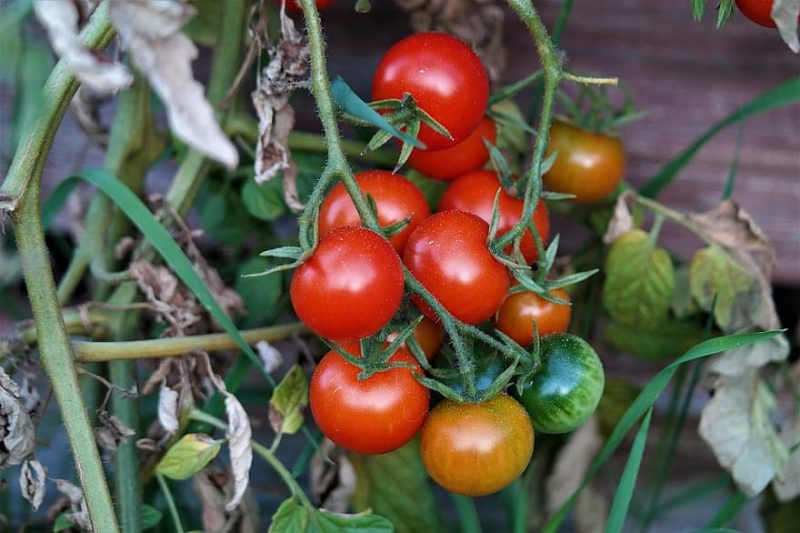If you’re wondering how to grow tomatoes in Texas, then you will need to know the ideal conditions to do so.
Naturally, when it comes to tomatoes, there are also unique tending practices to be aware of. These amazing crops can benefit the human body in more ways than one, which is no wonder why they are all the rage, even in Texas.

However, the state is known to have high levels of temperatures, especially during summer. Although tomatoes don’t thrive in the heat, some steps can be followed to ensure that they get to yield a bountiful and healthy harvest.
The Proper Way of Growing Tomatoes
Even under the recommended environment, tomatoes can already be quite tricky to cultivate, and more so in areas with extremely high or low temperatures. This means that growing them in Texas will be difficult.
When is the best time to start planting?
If you want your crops to grow in the best state possible, then you will need to provide the best start for it. That means that you have to begin planting at the right time, whether during spring, summer, or fall.
The temperature plays one of the most significant roles in successfully cultivating tomatoes. They do best in warm seasons, so during winters, they will refuse to grow. Unless you have a greenhouse, cultivating home-grown tomatoes will be challenging.
As soon as winter passes, however, you have to start transplanting your crops. You are recommended to begin as early as possible to take advantage of the cooler spring weather.
The temperature in Texas can be harsh during summers, so you might find it hard to maintain your tomatoes’ conditions. But if you switch to heat-tolerant variations, like Tycoon, Celebrity, and Sunmaster, you can still get a fruitful harvest.
On the other hand, growing them during fall is possible, although extra precautions must be taken. You would have to start transplanting in July, but since the temperature by that time can still be pretty high, be sure to tend to your crops’ needs.
Keeping the surrounding soil moist is crucial to their growth, so using mulch can aid you when it comes to this. Also, keep your tomatoes protected from the scorching sun rays by providing shade.
What are the Benefits of Greenhouse Gardening?
If you’re serious about growing tomatoes or any type of vegetable, fruit, herb, or flower, you should consider trying your hand at greenhouse gardening. Whether you plan to set up a mini greenhouse, a semi pro greenhouse, or a hobby greenhouse, you can be sure that you’ll be reaping the rewards of your hard work. Here’s a look at some of the wonderful benefits of growing your plants in a greenhouse:
Extended growing seasons
The most obvious benefit of greenhouse gardening an extended growing season. Since its enclosed space allows you to manipulate the climate for growing, you won’t put your plants at risk when you swing temperatures at the start or the end of the normal planting season. In other words, you’ll be free to grow any type of plant all-year-round!
Protection from inclement weather
Growing your plants in a greenhouse allows them to have a level of protection from bad weather conditions. You won’t have to worry about the adverse effects of unseasonal temperature swings and strong winds on your delicate plants. The structure diffuses the sunlight while providing enough ventilation for your plants to enjoy.
Wide range of plant options
Growing plants that aren’t native to your own region is a non-issue when it comes to greenhouse gardening. If you’re looking to grow warm-season vegetables and tropical plants, a greenhouse can provide them with enough warmth and humidity. Thanks to the consistent heat, as well as the insulation that it provides, you can easily make adjustments to reap your ideal harvest.
Protection from pests and vermin
Having your own greenhouse can be extremely beneficial if you want to make sure that your plants are kept safe from harmful insects and animals. Predators that include deer, moles, and birds won’t have access to the enclosed structure. What’s more, greenhouse gardening also eliminates the need for toxic chemicals or pesticides that are meant to keep unwanted critters at bay.
Customization and portability
When choosing a greenhouse, you can find a slew of portable and customizable options that are easy to assemble and maintain.
How To Grow Tomatoes In Texas Effectively?
Tomatoes are known to grow best when the garden soil is rich in organic matter. Therefore, add high-quality organic materials such as compost, leaves, or mulch. These will keep the weeds under control and the soil hydrated and cool.
You can also grow tomatoes in pots, but skip using garden soil and switch to potting mix instead. In addition, organic materials are necessary, as well as drip irrigation.
By the time you transfer them outside, the garden soil condition should remain ideal for tomatoes. Apply fertilizers before planting them, after the first yields are one-third grown, two weeks after they are fully developed, and more after a month.
Remember, the basics of how to grow tomatoes in Texas begins with water, so be sure to water them every two to four days and to always observe for signs of pests and diseases.
